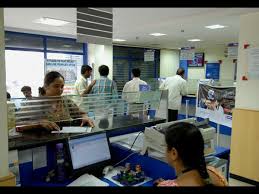The slowdown in the economy and the resultant rise in bad loans have led to criticism of public sector banks and questioning of their raison d’être. While there was a rush to find a quick solution by merging PSBs, it would be wise to examine the ground realities closely, points out Navodita, our Associate Editor, in the weekly column, exclusively for Different Truths.
The unearthing of the major Punjab National Bank (PNB) fraud of Rs. 11, 400 crore, and summoning of Nirav Modi and Mehul Choksi by Enforcement Directorate (ED), some say, is just the tip of the iceberg. As ED has registered fresh cases against Gitanjali Group of Companies, the PNB is trying its best to regain its lost esteem and is saying it will be back to normalcy six months from now. Most definitely, it drives home the point that all is not well with the Indian banking sector, especially the public sector banks (PSBs).
The slowdown in the economy and the resultant rise in bad loans have led to criticism of public sector banks and questioning of their raison d’être. While there was a rush to find a quick solution by merging  PSBs, it would be wise to examine the ground realities closely. Does India need a mix of efficiently-run PSBs and aggressive private banks to achieve growth and development along with social justice – this is the larger question?
PSBs, it would be wise to examine the ground realities closely. Does India need a mix of efficiently-run PSBs and aggressive private banks to achieve growth and development along with social justice – this is the larger question?
Bill Gates had once said in 1994, “Banking is necessary, but banks are not.” A similar view was echoed in India in the context of PSBs that India needs banking to expand, but doesn’t need as many PSBs. It was due to this that five associate banks were merged under SBI reducing the total number of PSBs to 21. The government is said to be whittling down the number to six by merging larger PSBs as well as by merging weaker PSBs with stronger ones. Consolidation of PSBs was thus not a new idea as, since the onset of reforms, there have been 32 bank mergers, involving private sector banks. In 2004, the Reserve Bank of India (RBI) forced the problem-ridden privately owned Global Trust Bank (GTB), which was licensed during the first phase of reforms to merge with the public sector Oriental Bank of Commerce. There is only one instance of the merging of the two PSBs: the takeover of New Bank of India by Punjab National Bank (PNB) in 1993. The RBI had forced this merger under Section 45 of the Banking (Regulation) Act, 1949 as New Bank of India reached a precarious state of liquidity.
The merger was messy in more ways than one – PNB had been a strong bank with an uninterrupted record of profits, but it suffered a net loss of Rs. 96 crore in 1996, following the merger. It had to face several problems and litigation relating to absorbing the staff of New Bank of India in its stream. It reportedly  took PNB five years and more to get over the merger effect. How long will it take it to get over this crisis is anybody’s guess.
took PNB five years and more to get over the merger effect. How long will it take it to get over this crisis is anybody’s guess.
Historical data goes on to indicate that in the 1991-92 Harshad Mehta scam, a few foreign and Indian banks have been involved in that fraud. Significantly, the Indian banks which have been directly involved have shown a poor performance in terms of incomes earned and profitability achieved in 1991-92. In contrast, the concerned foreign banks have garnered copious income and profit, thus providing one more indication that they masterminded the series of frauds, for which the Indian banks have allowed themselves to be used and have had to suffer losses. Even the State Bank of India, which is the strongest of all Indian banks and which got embroiled in the Harshad Mehta affair, has shown a net profit to working funds ratio of 0.18 percent, compared to the average for the 20 nationalised banks (after including the poorly performed ones) of 0.30 percent. The corresponding profitability ratios for Citibank and ANZ Grindlays stood over 10 times higher at 2.07 percent and 1.88 percent, respectively. One should not grudge it if foreign banks earn higher profits from genuine banking operations because of their superior operational efficiency. In fact, the bulk of their earnings are from treasury operations, from so-called portfolio management and from lending in the money market non-deposit resources mobilised essentially from other banks, financial institutions, and public sector undertakings. Yet another aspect of public policy which has favoured foreign banks is the extremely limited social obligations (such as priority sector lending) that they have been required to shoulder.
In contrast, the Indian banks are in a disadvantageous position in many respects. They shoulder heavy social responsibilities: rural branch banking, special employment schemes, IRDP (Integrated Rural  Development Programme), schemes for minorities, scheduled castes/tribes, and women, and many others. They face large loan losses from big and small borrowers. Apart from receiving no interest income from such and other non-performing advances, these banks have to make sizable provisions for bad debts. It may be said that policy planners have thus provided the foreign banks with a conducive environment to appropriate unreasonably high levels of profits in India. Is it really necessary, either for attracting foreign direct investment or for improving the country’s credit rating in the international financial markets that such an unrestrained environment be provided to the foreign bank to rake in phenomenally large profits from this poor society and transfer them abroad? The extraordinarily high profits of the foreign banks in India and even more important, the direct contribution of government policy to the making of such profits naturally evoke a parallel with the much-discussed ‘drain’ during the colonial period.
Development Programme), schemes for minorities, scheduled castes/tribes, and women, and many others. They face large loan losses from big and small borrowers. Apart from receiving no interest income from such and other non-performing advances, these banks have to make sizable provisions for bad debts. It may be said that policy planners have thus provided the foreign banks with a conducive environment to appropriate unreasonably high levels of profits in India. Is it really necessary, either for attracting foreign direct investment or for improving the country’s credit rating in the international financial markets that such an unrestrained environment be provided to the foreign bank to rake in phenomenally large profits from this poor society and transfer them abroad? The extraordinarily high profits of the foreign banks in India and even more important, the direct contribution of government policy to the making of such profits naturally evoke a parallel with the much-discussed ‘drain’ during the colonial period.
This PNB fraud drives home the point that lot needs to be done to reform the PSB banking sector and to see what balance can be drawn between the PSBs and the private sector banks. Do we need to stay more vigilant?
©Navodita Pande
Photos from the Internet
#BankingInIndia #BankingSystem #SickBanking #PNB #Scams #Profits #Aamonomics #DifferentTruths







 By
By

 By
By
 By
By